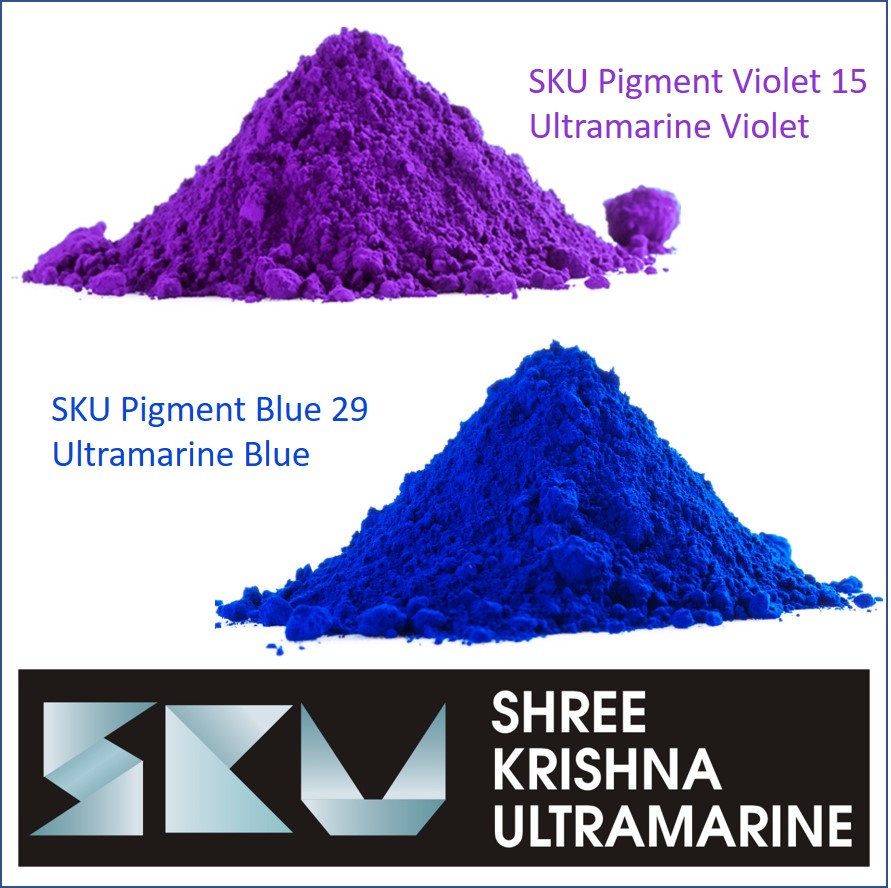Why Ultramarine Pigments Remain the World’s Most Trusted Blue

For generations, color has shaped art, design, and industry. Among the most celebrated hues, Ultramarine is revered for its vivid tones. Today, companies like SKU Pigments supply high-quality Ultramarine pigments, including Ultramarine Blue, Ultramarine Violet, Pigment Blue 29, and Pigment Violet. From paints and plastics, Ultramarine has become the backbone of modern blue pigments.
The Journey of Ultramarine Through Time
The name Ultramarine comes from the Latin “ultra mare,” meaning “beyond the sea,” a reference to lapis lazuli originally imported from Afghanistan. For centuries, it was worth more than gold, used by Renaissance masters to paint sacred art. It symbolized luxury and spirituality.
Modern chemistry made it possible to synthesize Ultramarine pigments, bringing the once-exclusive shade into mass production. This breakthrough turned a luxury color into a cost-effective solution for countless sectors.
Why Ultramarine Blue Leads the Industry
Ultramarine Blue pigments—the synthetic form of Pigment Blue 29—are globally trusted. Known for their stability, they are safe, eco-friendly, and non-toxic. They are used in:
• Decorative finishes for long-lasting shades.
• Plastics and rubber, thanks to chemical safety.
• Publishing and packaging, where clarity is vital.
• Beauty products, given their skin-safe quality.
This balance of economy and brilliance keeps Ultramarine Blue among the global color leaders.
Exploring the Subtlety of Ultramarine Violet
Ultramarine Violet offers softer tones that appeal in cosmetics. Pigment Violet derived from Ultramarine is highly dispersible, making it ideal Pigment Blue for children’s toys.
Its gentle color enhances interior design, while ensuring durability without chemical breakdown.
Pigment Blue in Modern Industries
Pigment Blue—particularly Ultramarine Blue pigments—remains a trusted industrial choice. It offers weather resistance for:
• Car finishes with resistance to fading.
• Branding, ensuring long-term appeal.
• Decorative plasters, adding functionality and design.
This multi-industry demand ensures Pigment Blue’s future relevance.
Advantages of Ultramarine Pigments
• Non-Toxic & Safe: Ideal for cosmetics and toys.
• Heat & Light Resistant: Stable in outdoor use.
• Eco-Friendly: Manufactured with sustainability.
• Cost-Effective: Affordable vs. natural pigments.
• Versatile: Across paints, plastics, printing, and construction.
Ultramarine in Modern Industries
1. Paints & Coatings: Durable architectural shades.
2. Plastics & Rubber: Stable in polymers.
3. Cosmetics: Skincare-safe pigments.
4. Construction: Tiles and cement.
5. Printing & Inks: Sharp colors for publishing.
The SKU Pigments Advantage
SKU Pigments leads the market, offering reliability in Ultramarine pigments. Their product portfolio includes:
• Pigment Blue 29 for vibrant, bold applications.
• Ultramarine Violet and Pigment Violet for refined finishes.
• Custom shades for specialized markets.
Their reputation is built on customer satisfaction and eco-friendly production.
Ultramarine: From Heritage to High-Tech
From a rare treasure to the backbone of blue pigments, Ultramarine has stood the test of time. Whether it’s the timeless vibrancy of Ultramarine Blue, the sophistication of Ultramarine Violet, or the stability of Pigment Blue 29, Ultramarine pigments remain unrivaled.
With SKU Pigments as a leading manufacturer, industries gain beauty, safety, and performance. As demand for non-toxic pigments rises, Ultramarine will remain dominant in global markets.
Common Queries About Ultramarine
1. What is Ultramarine?
A vibrant pigment from lapis lazuli, now produced synthetically.
2. What is Pigment Blue 29?
The standard code for Ultramarine in industries.
3. Where is Ultramarine Violet used?
In cosmetics and decorative paints.
4. Are Ultramarine pigments safe?
Yes, non-toxic and eco-friendly.
5. Why choose SKU Pigments?
Because of quality, eco-focus, and range.